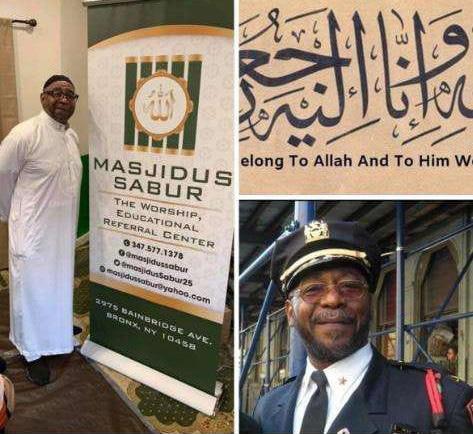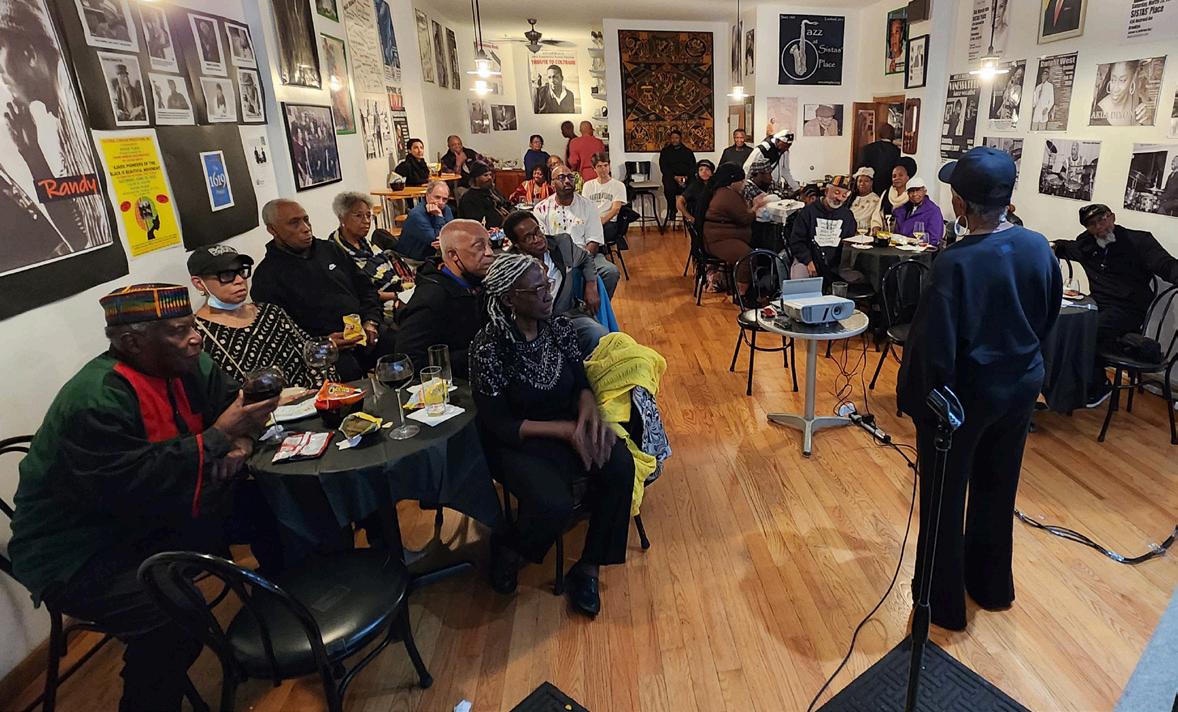
4 minute read
Religion & Spirituality
Imam Umar Abdul-Jalil transitions
By MAL’AKIY 17 ALLAH Special to the AmNews
The local cultural and Islamic communities paid their respects to a prominent Harlem figure on August 20 during the janaazah for Imam Umar Abdul-Jalil, at the Islamic Center on 96th Street and 3rd Avenue in upper Manhattan. He had transitioned onto the ancestral realm three days earlier at his Bronx home. Mayor Eric Adams came and paid his respects.
He was born on July 31, 1949, in South Carolina and his family soon migrated to Harlem. As a teen, he was positively influenced by the prominent Islamic presence in Harlem during the 1960s by Malcolm X and the Nation of Islam, whose Temple No. 7 stood nearby on the southwest corner of 116th St. and Lenox Ave. During the late 1960s he resided at 21 West 112th St. in Central Harlem’s Steven Foster Houses prior to them being renamed the Martin Luther King Jr. Towers in late 1968, and in fact was the one who discovered Allah, The Father (Clarence 13X’s) bullet-riddled body in the elevator in the lobby of his building during the early morning of June 13, 1969.
He was known as “Boscoe” in the streets of Harlem prior to joining Temple No. 7 under the leadership of Minister Louis Farrakhan, and by the mid-’70s his spiritual journey led him to embrace Al-Islam, whereupon he took his shahadah in the mid-1970s. He was taken off the streets during the mid-’80s and incarcerated for several years in upstate New York where he also aligned with Imam Rasul Rafiq and continued to grow spiritually, as well as teach other young men who were embracing Islam.
“His legacy is about the oneness of God and servicing our community and doing good deeds,” reflected his associate, Imam Alprentice Talibudeen Mecutehan.
Upon being released from prison during the early 1990s, he served as Imam on Riker’s Island, as well as other local correctional facilities. He also attended the Mosque of Islamic Brotherhood (130 West 113th St.), and by 1999 he opened Masjidus Sabur at 119th Street, between 1st and 2nd Avenues, then moved on to Adam Clayton Powell Jr. Blvd. and 132nd Street, before founding up in the Bronx on 2975 Bainbridge Ave.
He was known as a studious scholar who always kept an open mind, provided summer camps for local youths, and had a thriving entrepreneurial spirit with a clothing company in the 1990s and realty in later years.
“He was living the mantra of wanting for your brother, sister, and neighbor what you want for yourself. He had alliances with muslims from the Nation of Islam, Five Percenters, Moors, Zulus,” stated Ima Talibudeen. “He was a follower of the prophet Muhammad [PBUH], he made himself available to the community by knowing who the community was, and that’s part of his legacy. He’d be able to have conversations with people and enjoy their humanity.”
He was known for his voracious thirst for Islamic history and studied various aspects from his vast library during his spiritual journey. Another memorial for him and his late wife, Halima, is scheduled for November 5 at the Bronx’s Eastwood Manor. He is survived by his current wife, children and family members.
Sista’s Place hosts a community salute to Pharoah Sanders
By ROGER WAREHAM
Pharoah Sanders, one of our greatest musicians, passed on September 24. On October 1, Sistas’ Place, Brooklyn’s landmark jazz institution, held a salute, “The Creator Has a Master Plan – A Community Remembrance of Pharoah Sanders.”
Words alone cannot capture the energy of Saturday night’s gathering. Sistas’ Place’s musical director Ahmed Abdullah and WBGO’s DJ Rob Crocker hosted an audience of Black folks, young, old and in between, who literally stood up and applauded after viewing video performances of “The Creator Has a Master Plan,” “After the Morning,” and “You’ve Got to Have Freedom.”
Between videos Ahmed riffed about his experience with Pharoah and the Sun Ra Arkestra and read from a piece he had written on Pharoah’s contribution to the development of what he has come to call “Jazz—a music of the Spirit.” Rob regaled the crowd with stories about “Little Rock,” as his close friends called him, and conveyed a message from the great alto player Gary Bartz. City Councilman Charles Barron said, “I entered the Black Panther Party when I was a teenager. Pharoah was my favorite musician, even more than Stevie Wonder. I still have all of his albums.” WBAI’s Basir Mchawi, (an original member of The East, where Pharoah regularly played), spoke about Pharoah’s relationship internationally to Africa and nationally to local institutions like The East. The renowned bassist Stanley Banks was amazed that from watching the videos that evening, he had observed something new about Pharoah’s brilliance. Sistas’ Place founder and driving force, Viola Plummer summed up, “Pharoah embodied the symbiotic relationship between the PanAfrican liberation struggle which demanded the music and the music which inspired the struggle. The music saved our lives.”
From indelible memories they collectively painted a portrait of Pharoah as an artist of the people, whose music ranged from melodic to free. On Saturday night, in the People’s Republic of Brooklyn, Pharoah Sanders lived.













